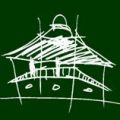and career path that can help you find the school that's right for you. What did the part….mean? Get the unbiased info you need to find the right school. Plants lesson plan:- How Plants Grow Activities: Learn how plants grow from Seeds to Plant.Pick some used paper cups, fill the cup with soil, plant some quick-growing flower seeds in the soil, and put the cups outside of the class room. Check out the happiness and motivation in the room. After the quick presentation, I will hand each group the iPad with the bookmarked website and set out the books I checked out of the school library and send them back to their stations to complete their task. - Illuminate for students which parts of plants they are eating; in other words connect this lesson in identification to their lives. Develop models to describe that organisms have unique and diverse life cycles but all have in common birth, growth, reproduction, and death. Get access risk-free for 30 days, 2. Complete lesson plan ⦠Students plant a seed and graph the growth. 2. After each type of seed has been tasted, talk about: What type of plant this seed would have become. courses that prepare you to earn In Parts of a Plant, an animated science resource page with lesson plans and teaching tips, for Kindergarten to 3rd graders, you'll be introduced to roots, stems, seeds, leaves, flowers, and fruit. Four of the stations are considered input stations where students are learning new information about animal and plant cells and four of the stations are output stations where students will be demonstrating their mastery of the input stations. They can present their findings in a written or oral report. You can read more about how I set up the station labs here. © copyright 2003-2021 Study.com. Define GERMINATION c. Illustrate understanding on the functions of each part. How Do I Use Study.com's Assign Lesson Feature? GOD BLESS! Identify the parts of a seed b. Predict what is inside their seed. They will also be given magnifying glasses, tweezers, rulers and tape measures, and an insert for their science journal page in the narrative section. Sociology 110: Cultural Studies & Diversity in the U.S. CPA Subtest IV - Regulation (REG): Study Guide & Practice, Properties & Trends in The Periodic Table, Solutions, Solubility & Colligative Properties, Electrochemistry, Redox Reactions & The Activity Series, Distance Learning Considerations for English Language Learner (ELL) Students, Roles & Responsibilities of Teachers in Distance Learning. Of these parts, the embryo is clearly the most important. Overview Old seed packets make the perfect tools for exploring seed germination. When the teams have agreed on an answer, they should quietly write it on their board. Samples might include (but are not limited to): sunflower seeds (shelled or still in the shell), pistachios (shelled or still in the shell). What are some types of seeds that we eat? These lesson plans take in the whole spectrum of seed lessons with simple activities ranging from sprouting seeds to others requiring students to make a container, to plant the seed and then to care for it into plant-hood. All Rights Reserved. Each group should share the resources in the room to revise and add to their work in their journals. We donât want to stifle your creativity or your personal touch. Seed Sensation: Exploring and Sorting Seeds. Appreciate and value the importance of seed germination c. Illustrate understanding of each part II. They carry the beginning of plants inside of them. Your students will learn about the needs of a plant and how plants grow from seeds. Define GERMINATION c. Illustrate understanding on the functions of each part. After the students discuss, we will review what a seed is and then launch into the parts of a seed. To learn the basic parts of seeds and what they need to grow into a plant. Grade Level/Range: 2-5 Objective: Students will learn: â¢!A seed contains a new plant. The test seed or bulb mentioned in the lesson plan should be grown in an appropriate place under appropriate conditions - so with lots of light, warmth and water. The seed also contains endosperm, or a food suppl⦠The plants have many parts such as the stem, fruit, flower, roots, and leaves. The lesson seeds we share are one-page, quick reference ideas that are meant to be used to get you started in developing a comprehensive lesson plan. Students will be able to create investigations to determine the parts of a seed and then research in order to describe the purpose of those parts. A seed is a small object produced by a plant from which a new plant can grow. First graders identify the parts of a seed. This student realizes he is a scientist. Don't worry about the extra time that is needed to help the children become careful investigators. Germination Exploration!! Lesson!Plan!Series.Leaders!in!Plant 98 Rocks Shreveport Listen Live,
Who Invented The Scytale Cipher,
Southern Junkie Wholesale,
Colorado State University Self-guided Tour,
Carl Cookson Property Tycoon,
